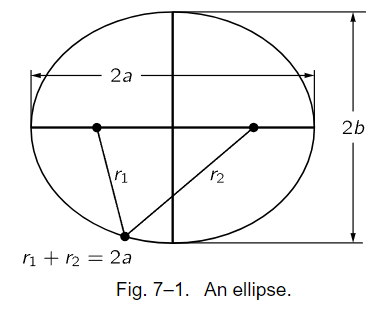
تاريخ الفيزياء

علماء الفيزياء


الفيزياء الكلاسيكية

الميكانيك

الديناميكا الحرارية


الكهربائية والمغناطيسية

الكهربائية

المغناطيسية

الكهرومغناطيسية


علم البصريات

تاريخ علم البصريات

الضوء

مواضيع عامة في علم البصريات

الصوت


الفيزياء الحديثة


النظرية النسبية

النظرية النسبية الخاصة

النظرية النسبية العامة

مواضيع عامة في النظرية النسبية

ميكانيكا الكم

الفيزياء الذرية

الفيزياء الجزيئية


الفيزياء النووية

مواضيع عامة في الفيزياء النووية

النشاط الاشعاعي


فيزياء الحالة الصلبة

الموصلات

أشباه الموصلات

العوازل

مواضيع عامة في الفيزياء الصلبة

فيزياء الجوامد


الليزر

أنواع الليزر

بعض تطبيقات الليزر

مواضيع عامة في الليزر


علم الفلك

تاريخ وعلماء علم الفلك

الثقوب السوداء


المجموعة الشمسية

الشمس

كوكب عطارد

كوكب الزهرة

كوكب الأرض

كوكب المريخ

كوكب المشتري

كوكب زحل

كوكب أورانوس

كوكب نبتون

كوكب بلوتو

القمر

كواكب ومواضيع اخرى

مواضيع عامة في علم الفلك

النجوم

البلازما

الألكترونيات

خواص المادة


الطاقة البديلة

الطاقة الشمسية

مواضيع عامة في الطاقة البديلة

المد والجزر

فيزياء الجسيمات


الفيزياء والعلوم الأخرى

الفيزياء الكيميائية

الفيزياء الرياضية

الفيزياء الحيوية

الفيزياء العامة


مواضيع عامة في الفيزياء

تجارب فيزيائية

مصطلحات وتعاريف فيزيائية

وحدات القياس الفيزيائية

طرائف الفيزياء

مواضيع اخرى
Kepler’s laws
المؤلف:
Richard Feynman, Robert Leighton and Matthew Sands
المصدر:
The Feynman Lectures on Physics
الجزء والصفحة:
Volume I, Chapter 7
2024-02-04
2291
First of all, Kepler found that each planet goes around the sun in a curve called an ellipse, with the sun at a focus of the ellipse. An ellipse is not just an oval, but is a very specific and precise curve that can be obtained by using two tacks, one at each focus, a loop of string, and a pencil; more mathematically, it is the locus of all points the sum of whose distances from two fixed points (the foci) is a constant. Or, if you will, it is a foreshortened circle (Fig. 7–1).

Fig. 7–1. An ellipse.
Kepler’s second observation was that the planets do not go around the sun at a uniform speed, but move faster when they are nearer the sun and more slowly when they are farther from the sun, in precisely this way: Suppose a planet is observed at any two successive times, let us say a week apart, and that the radius vector 1 is drawn to the planet for each observed position. The orbital arc traversed by the planet during the week, and the two radius vectors, bound a certain plane area, the shaded area shown in Fig. 7–2. If two similar observations are made a week apart, at a part of the orbit farther from the sun (where the planet moves more slowly), the similarly bounded area is exactly the same as in the first case. So, in accordance with the second law, the orbital speed of each planet is such that the radius “sweeps out” equal areas in equal times.

Fig. 7–2. Kepler’s law of areas.
Finally, a third law was discovered by Kepler much later; this law is of a different category from the other two, because it deals not with only a single planet, but relates one planet to another. This law says that when the orbital period and orbit size of any two planets are compared, the periods are proportional to the 3/2 power of the orbit size. In this statement the period is the time interval it takes a planet to go completely around its orbit, and the size is measured by the length of the greatest diameter of the elliptical orbit, technically known as the major axis. More simply, if the planets went in circles, as they nearly do, the time required to go around the circle would be proportional to the 3/2 power of the diameter (or radius). Thus Kepler’s three laws are:
- Each planet moves around the sun in an ellipse, with the sun at one focus.
- The radius vector from the sun to the planet sweeps out equal areas in equal intervals of time.
- The squares of the periods of any two planets are proportional to the cubes of the semimajor axes of their respective orbits: T∝a3/2.
__________________________________________________
margin
1- A radius vector is a line drawn from the sun to any point in a planet’s orbit.
 الاكثر قراءة في مواضيع عامة في علم الفلك
الاكثر قراءة في مواضيع عامة في علم الفلك
 اخر الاخبار
اخر الاخبار
اخبار العتبة العباسية المقدسة

الآخبار الصحية















 قسم الشؤون الفكرية يصدر كتاباً يوثق تاريخ السدانة في العتبة العباسية المقدسة
قسم الشؤون الفكرية يصدر كتاباً يوثق تاريخ السدانة في العتبة العباسية المقدسة "المهمة".. إصدار قصصي يوثّق القصص الفائزة في مسابقة فتوى الدفاع المقدسة للقصة القصيرة
"المهمة".. إصدار قصصي يوثّق القصص الفائزة في مسابقة فتوى الدفاع المقدسة للقصة القصيرة (نوافذ).. إصدار أدبي يوثق القصص الفائزة في مسابقة الإمام العسكري (عليه السلام)
(نوافذ).. إصدار أدبي يوثق القصص الفائزة في مسابقة الإمام العسكري (عليه السلام)


















